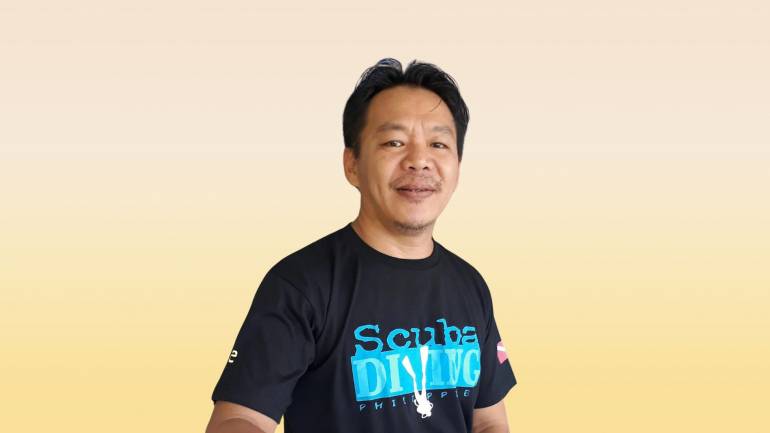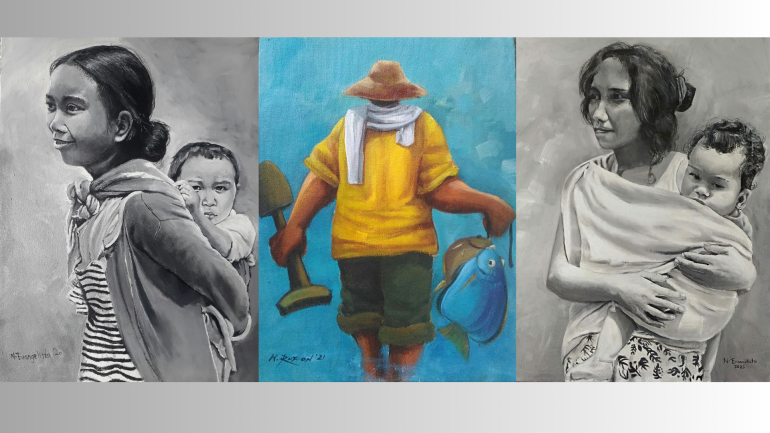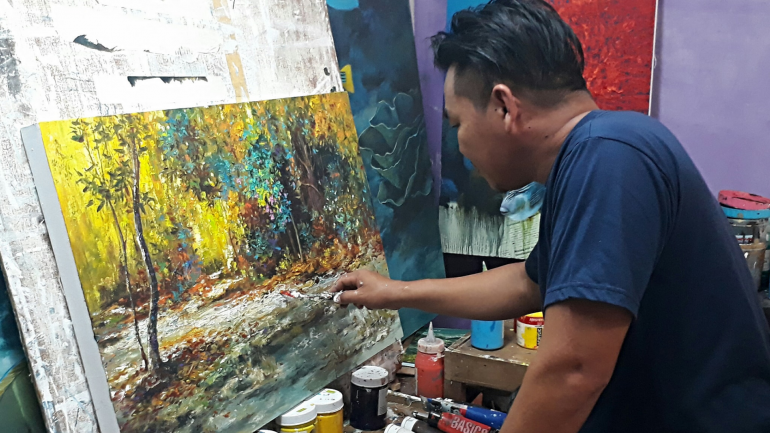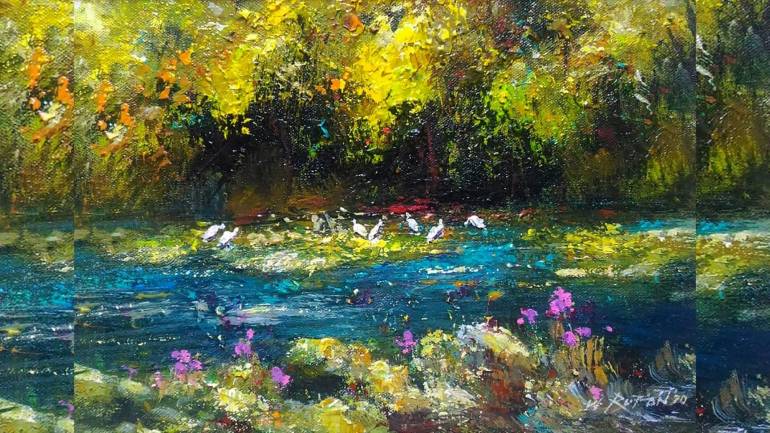Art, nature, and nurture: Lay minister guides young talents with a heart for the environment

Lay Minister Mentors Aspiring Artists, with a Heart for Nature
A lay minister known for his contributions to the visual arts has embraced the role of mentoring, particularly focusing on nurturing young talents.
Among those he guides is a young indigenous Mangyan artist, whose developing skill in painting offers a more sustainable alternative to his family's charcoal production, which contributes to environmental degradation.
Wilfredo "Jun" Rufon, 55, was recently featured on DZSB 104.1 Spirit FM in Calapan, where he introduced his protégé, 22-year-old Nilo Evangelista.
Evangelista’s striking black-and-white pencil drawing of a tribal woman carrying an empty native basket captivated a doctor who saw the work from afar.
The doctor, impressed by the artistry and its story, promptly purchased the piece. Evangelista, who titled his work “SOLD OUT” to symbolize the absence of food in the basket, completed the painting in just one week.
For Evangelista, the radio appearance was a first, and he was more excited to greet his family and friends than to discuss his growing success.
But Rufon, ever the mentor, expressed his hope that Evangelista would recognize the potential of his unique talent. "Expression, cultural awareness, alternative livelihood, and opportunities for him to finish his education" are just a few of the prospects Rufon hopes Evangelista will explore.
Nurturing Talent
Evangelista, raised in the mountains, has been passionate about drawing since his kindergarten days, often sketching anime and cartoons influenced by lowland culture.
His love for art led him to participate in painting contests as early as Grade 6.
Rufon discovered Evangelista during an art workshop he facilitated for students at Gloders College in Puerto Galera, a popular tourist destination in the Philippines.
During the pandemic, Rufon seized the opportunity to locate Evangelista in the mountains, explaining to his parents his desire to help develop their son's talent.
With great dedication, Rufon rented a classroom at Gloders College, where he mentored Evangelista, who stayed in the adjacent room. "Free board and lodging," as Rufon calls it.
After the pandemic, they moved to Rufon's home in the town center, where Evangelista continued to receive guidance. Evangelista is grateful for the mentorship, saying, “I was taught the basics of line, circle, shading, colors, and guided when corrections were needed.”
Rufon reflects that many from Evangelista’s group showed promise, but Evangelista stood out for his quick learning. “Maybe because he didn’t have a cellphone to distract him,” Rufon muses. “With his talent and the support of others, he’ll go far, especially at such a young age. I only started at 28. But it’s never too late to learn—just like my 60-year-old mother Fely, who passed away last year.”
Hard Work and Determination Drive Rufon’s Artistic Journey
Born in Marikina but raised in Antique, Wilfredo Rufon grew up in a life of hardship. Attending Belison National High School in the Visayan region, he recalls his family’s struggles.
His mother worked as a domestic helper, which meant they “moved from one house to another,” while his father was never present. Rufon, the eldest of three siblings, saw his youngest sibling given up for adoption in hopes of a better life.
From an early age, Rufon’s talent for art was recognized, though it was often channeled into practical tasks like creating signboards, as tarpaulins did not exist at the time. “There were no art workshops or talks that reached our place,” he explains.
After finishing high school, Rufon headed to Manila, securing work as an artist at a glass etching company. There, Fine Arts students encouraged him to pursue formal education. “I just wanted to learn, not necessarily to graduate, because I was also the breadwinner and my mother was getting old and sickly,” Rufon reflects.
When the company shut down, an artist friend invited Rufon to Puerto Galera in the northern Philippines. Initially hesitant due to the distance, Rufon eventually found himself captivated by the area's natural beauty. It was there that he met his wife, Lisa, who worked as a therapist at a beach resort.
Inspired by Puerto Galera’s rich underwater life, Rufon began painting scenes influenced by the vibrant marine environment. Snorkeling trips with his family—his children Chressa and Wilfredo Jr.—brought both joy and health, further fueling his artistic passion.
His work expanded to include depictions of mangroves and forests, focusing not only on their natural beauty but also on the environmental damage caused by illegal logging, mining, and pollution. These themes resonate deeply with Pope Francis’ encyclical, Laudato Si (Care for Our Common Home), which Rufon takes to heart.
Rufon’s faith plays a central role in his life, and he remains grounded despite his artistic success. "Next to being an artist, I am first God’s helper,” he says, adding that he is not driven by competition or the pursuit of recognition, even though he has received several awards and citations from solo and group exhibits.
Community Building Through Art
Rufon believes that helping even one person is fulfilling, but his impact extends far beyond that. As the president of Voyage: The Mindoro Artists Group, Rufon supports local artists by helping them gain exposure and sell their works in Manila.
He dreams of a day when "locals would better patronize artworks." His group regularly exhibits at Sinag Coffee Roastery in Barangay Masipit, Calapan, and they also accept commissioned projects.
Rufon emphasizes the need for sustainable support for local artists. “The support we’re really asking for is sustainable patronage—so we won’t need to rely on external funding for events. For instance, if you’re a newly-elected official and need a portrait, we have local talents whose work is at par with those in Manila.”
Having lived in Puerto Galera for 21 years, Rufon and his group encourage established artists, like master watercolorist Popoy Cusi from Bongabong, to spend time with local talents, sharing their knowledge and experience.
Rufon’s mentoring of Nilo Evangelista mirrors his own journey. Reflecting on his earlier opportunities, he recalls when he was invited to exhibit his work at a restaurant-bar in a Knights of Columbus building in Balai Maria,
Intramuros. On that occasion, he brought along young artists, with financial support from local government officials and the Rotary Club of Calapan.
Rufon’s only request to Evangelista: “That he also teach others in his tribe.”













- Reply
Permalink